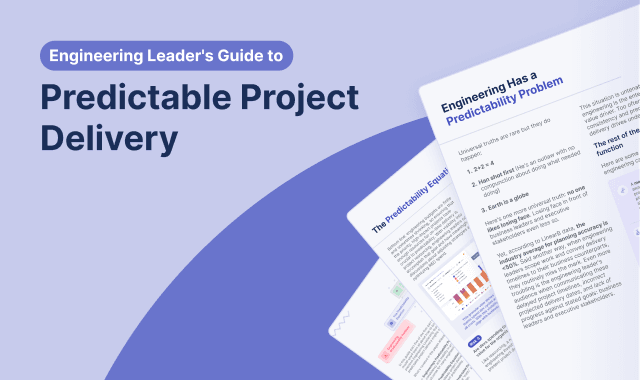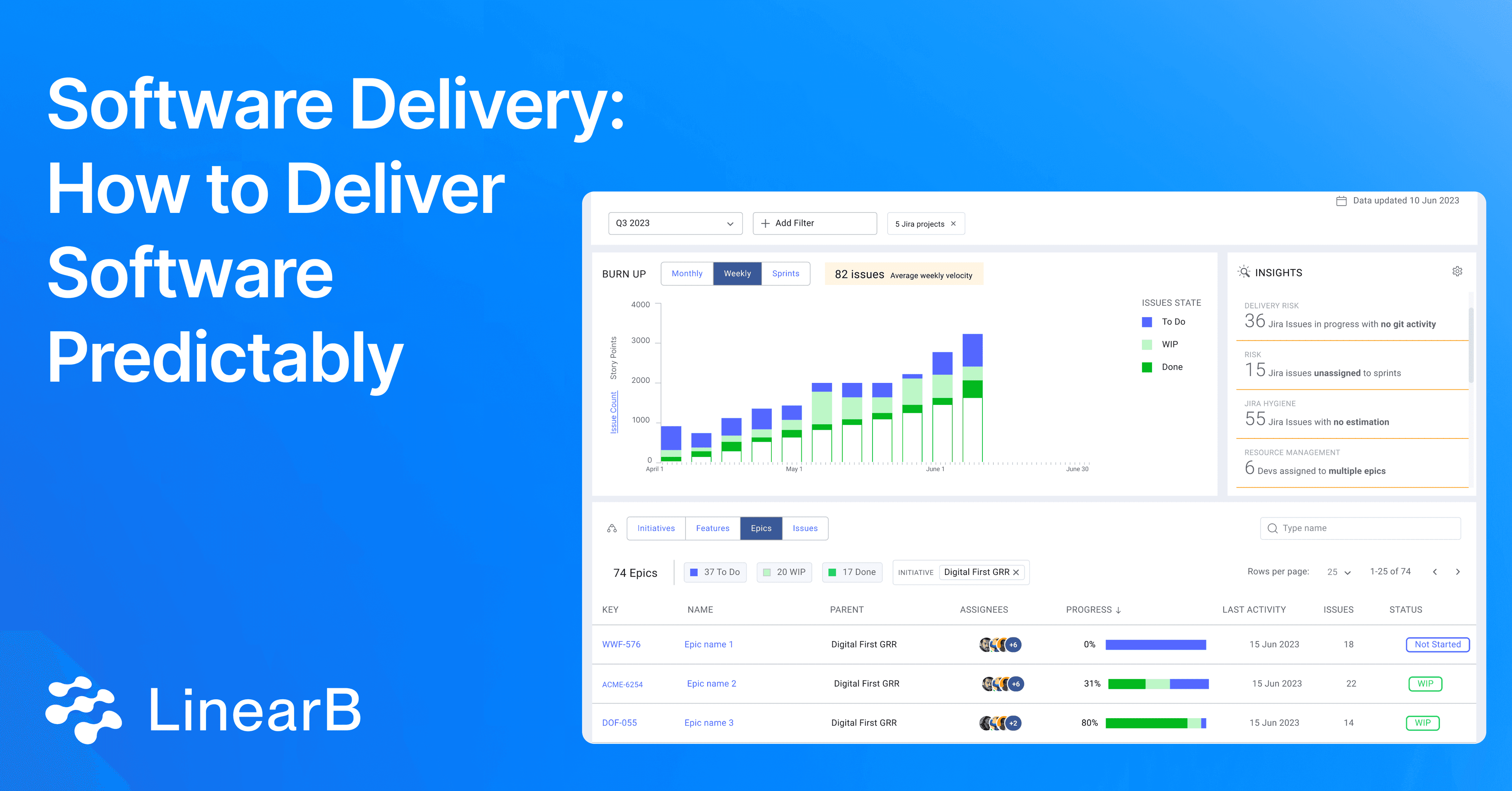On-time software delivery, within scope, and with high quality is a significant competitive advantage, and this blog will walk you through strategies to:
– Master software delivery
– Manage the software release life cycle
– Optimize your software delivery management practices
The Importance of Predictable Software Delivery
Delivering software predictably is one of the biggest challenges software engineering teams face. The inability to deliver software predictably affects every department, ultimately hurting customer satisfaction and retention – marketing teams can't plan effective campaigns, sales teams struggle to sell roadmap items confidently, and customer success teams are left in a difficult position when they cannot guarantee software delivery timelines. This disrupts the business and undermines trust between engineering and other departments.
A lack of predictability harms engineering teams as well. Developers working in unpredictable environments are more prone to burnout, have a worse developer experience, and produce lower quality code in order to meet unrealistic deadlines.
Predictable Software Delivery = Stability + Velocity - Risk
To achieve predictable software delivery, engineering leaders must focus on three key factors: stability, velocity, and risk. Balancing these elements is the foundation for a reliable and efficient software release cycle.

Stability
Stability is crucial and means having consistent cycle times, manageable pull request (PR) sizes, and a low rework rate. High-stability teams can plan their work more effectively and meet their delivery commitments more reliably.
Key indicators of stability include:
Consistent Cycle Times: Stable teams maintain a steady cycle time, which is critical for predictability.
Manageable PR Sizes: Keeping PR sizes small and consistent ensures that reviews are completed promptly, reducing bottlenecks.
Low Rework Rates: Teams that minimize rework can maintain focus on new value creation, rather than fixing issues that should have been caught earlier.
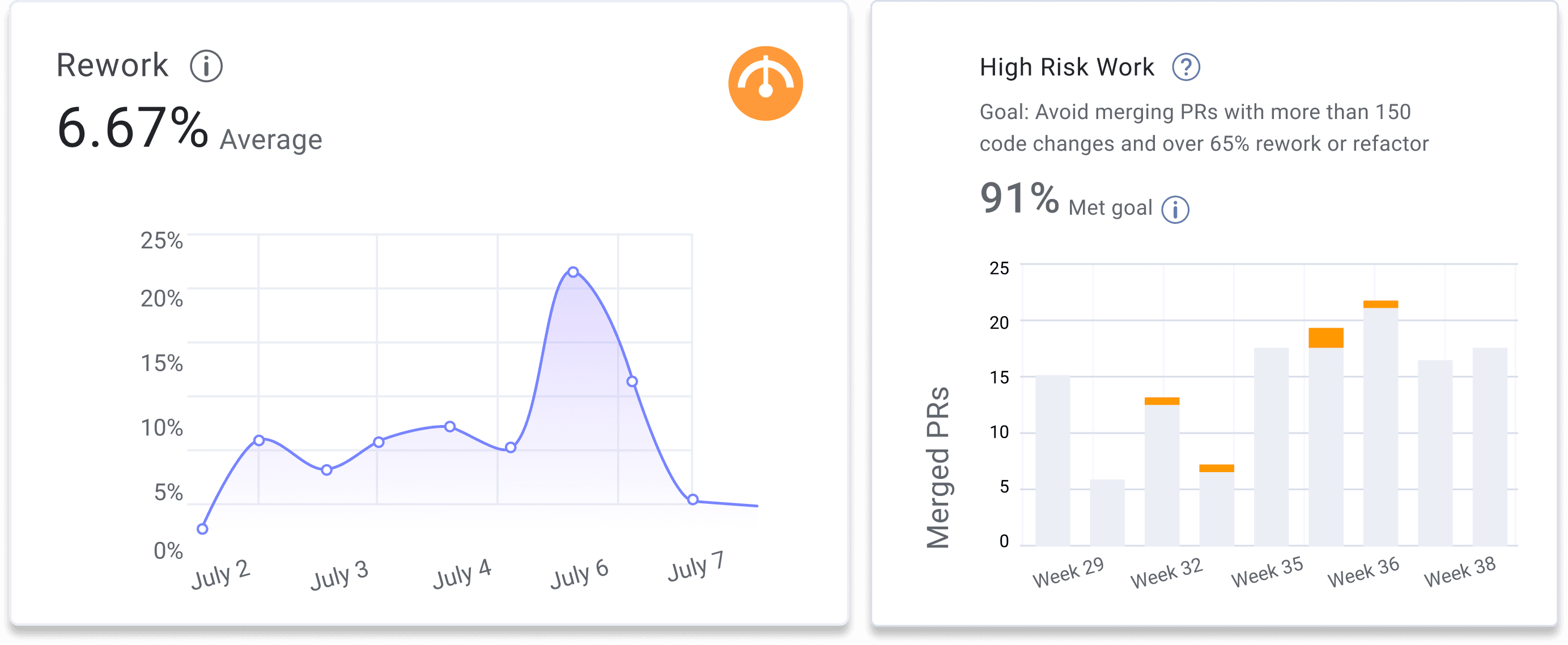
Velocity
Velocity measures how quickly your team can move from idea to production. It’s a common misconception that engineering teams must sacrifice code quality at the expense of pace. Rather, DORA research has “consistently shown that speed and stability are outcomes that enable one another.”
We like to call this counterintuitive relationship between quality and speed the “bicycle syndrome” – the faster you go, the more stable you are.
Key factors influencing velocity include:
Deployment Frequency: More frequent deployments demonstrate that your team is agile and more responsive to change, and reduces the time it takes to deliver new features.
PR Review Time: Shorter review times contribute to faster delivery, but only if the reviews are thorough enough to maintain quality.
Coding Time: The time developers spend writing code before creating a PR is also a key aspect of velocity. Efficient coding time indicates well-defined tasks and clear requirements.
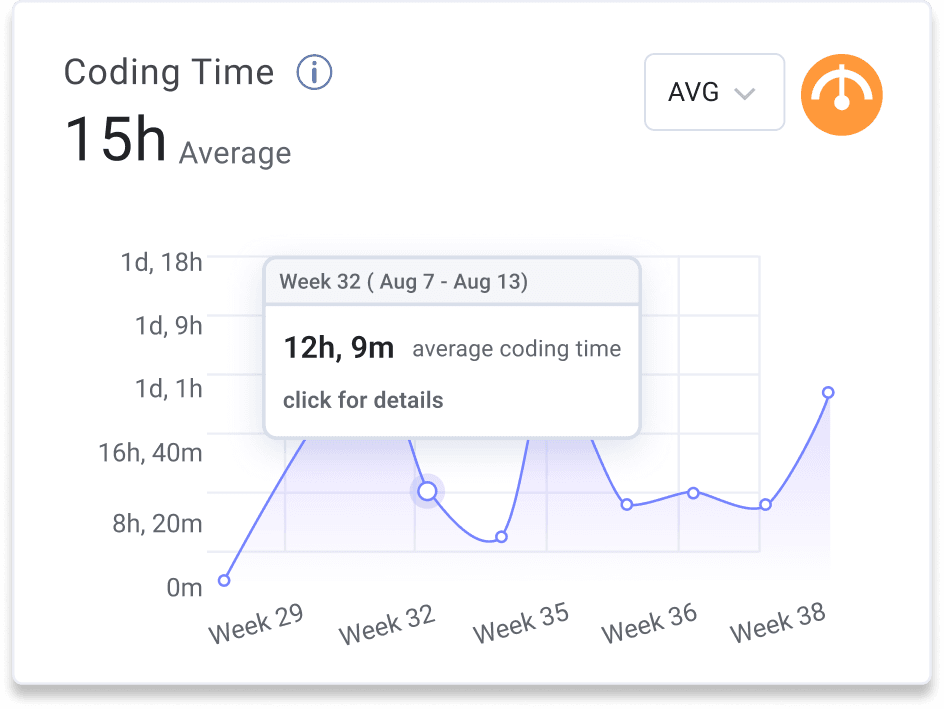
Risk Management
Risk is the chief variable in the predictability equation and one of the primary factors keeping teams from delivering on time regardless of their stability or velocity. Identifying potential obstacles early and implementing strategies to mitigate them is crucial to reducing software delivery timeline risks.
Software Delivery Risks:
Unplanned Work: Unplanned work, such as bug fixes or urgent changes, can derail any engineering team. This type of work typically requires immediate attention, pulling resources away from planned tasks and disrupting your team’s flow state. The key is to strike a healthy balance between appropriately scoping iterations with planned work and leaving a buffer for the team to do a little extra.
Study the table to understand the relationship between planning accuracy and capacity accuracy. These metrics, taken together, are an excellent barometer of whether or not a team is striking that balance.
High Capacity Accuracy (85% - 115%) | Low Capacity Accuracy (<80%) | |
High Planning Accuracy (75% - 96%) | Your project and or team is doing extremely well! Keep it up! If other projects are not trending so well, consider moving some resources around | Your team scoped the iteration well, but they aren’t necessarily responding to normal changes and fluctuations Work on adapting to the needs and priorities of the business |
| Low Planning Accuracy (<70%) | Execution is good, but you’re focusing on the wrong things Scope creep and unplanned work is taking up too much time Talk to PM about added work and prioritize your planned work | You’re taking on too much work – splitting focus and increasing delay risks You need to scope down and focus on your planned work Would be a good time to inquire about additional resources if possible |
Technical Debt: Technical debt refers to additional work required to fix issues that arise from taking shortcuts or making trade-offs when trying to deliver software. Unchecked technical debt can eventually lead to having a fragile codebase that is difficult to maintain and prone to bugs. This can slow down your delivery processes and increase the likelihood of critical failures.
Regularly addressing technical debt via refactoring is necessary for maintaining long-term predictability and overall code quality. Based on our Software Engineering Benchmarks Report that analyzed over 3.6 million pull requests across thousands of engineering teams, we recommend recommend teams invest 10% of their time in Keeping the Lights On (KTLO) activities such as bug work, uptime maintenance, enhancements to or maintaining security posture, and general issue monitoring. Without a significant investment in KTLO work, the business cannot function. But if a team spends too much time on KTLO, the risk of missing a promised deadline to deliver software grows.
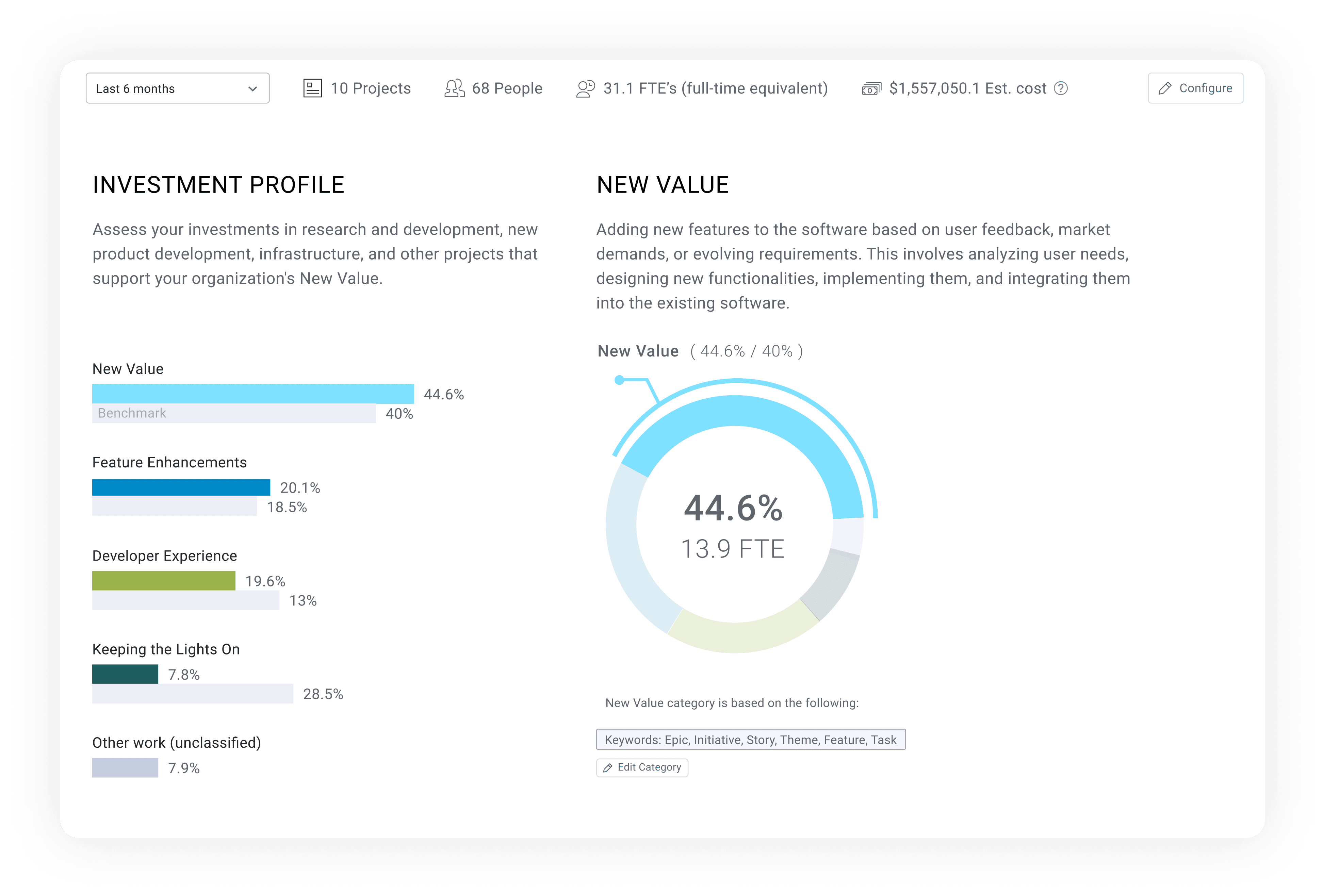
Scope Creep: Scope creep is when additional features or changes are added to a project after the project’s start date. Without fully evaluating your delivery timelines and resourcing constraints, scope creep can cause project delays and burnout your team. You need to have clear processes for evaluating and approving changes to ensure any changes align with the project's original goals and deadlines.

Resource Constraints: Limited resources, such as insufficient or misplaced headcount or a lack of tooling, can cause significant risks to software delivery. Without enough headcount or well-distributed teams, velocity and quality will suffer, leading to missed deadlines and increased stress. To guarantee high-priority tasks are given the appropriate level of company resources, high-performing executives use resource allocation metrics in order to prioritize work that aligns with business goals.

Poor Developer Experience: Developers want to be productive and deliver software on time. Consistency and clarity in a working environment are conducive to productivity. That means keeping things like WIP, velocity, stability, and added/unplanned work at acceptable levels every single iteration.
A core pillar of predictable software delivery is a strong foundation in developer experience. In order to reduce developer frustration while also increasing productivity, you can utilize workflow automations that:
- Remove developer toil
- Reduce context switching
- Offload manual work
- Minimize human error
- Drive clarity and standardization
Using automation to reduce developer toil and streamline work results in a more predictable software delivery pipeline.
Beginning Your Predictable Software Delivery Journey
To achieve predictable software delivery, engineering leaders need to implement a structured approach that combines visibility, benchmarking, resource allocation, and programmable workflows.
1. Visibility, Benchmarks, and a Robust Metrics Program
The first step toward consistent project delivery is data collection and analysis to gain insight and identify gaps. This involves building an engineering metrics program that provides visibility into both lagging and leading indicators of engineering health. Key metrics to monitor include cycle time, deployment frequency, and PR review time.
- Benchmarking: Compare your team's performance against industry standards to understand where you stand and where improvements are needed. This includes setting benchmarks for your stability and velocity while practicing risk management.

2. Resource Allocation and Investment Breakdown
After gaining visibility into your operational metrics, the next step is to align your organization with business priorities. This means analyzing and improving project resourcing and developer cycle investment.
- Resource Allocation: Make sure your teams are focused on high-value work that’s aligned with business goals. You may need to reallocate resources from lower-priority tasks to more important projects.

3. Data-Backed Improvement Goals
With visibility and resource allocation in place, next you have to set improvement goals based on the data you've collected. Focus on specific areas where your team can improve, such as reducing cycle time or increasing deployment frequency.
- Goal Setting: Use OKRs (Objectives and Key Results) to set clear, measurable goals for your team. Align these goals with both operational improvements and business outcomes.
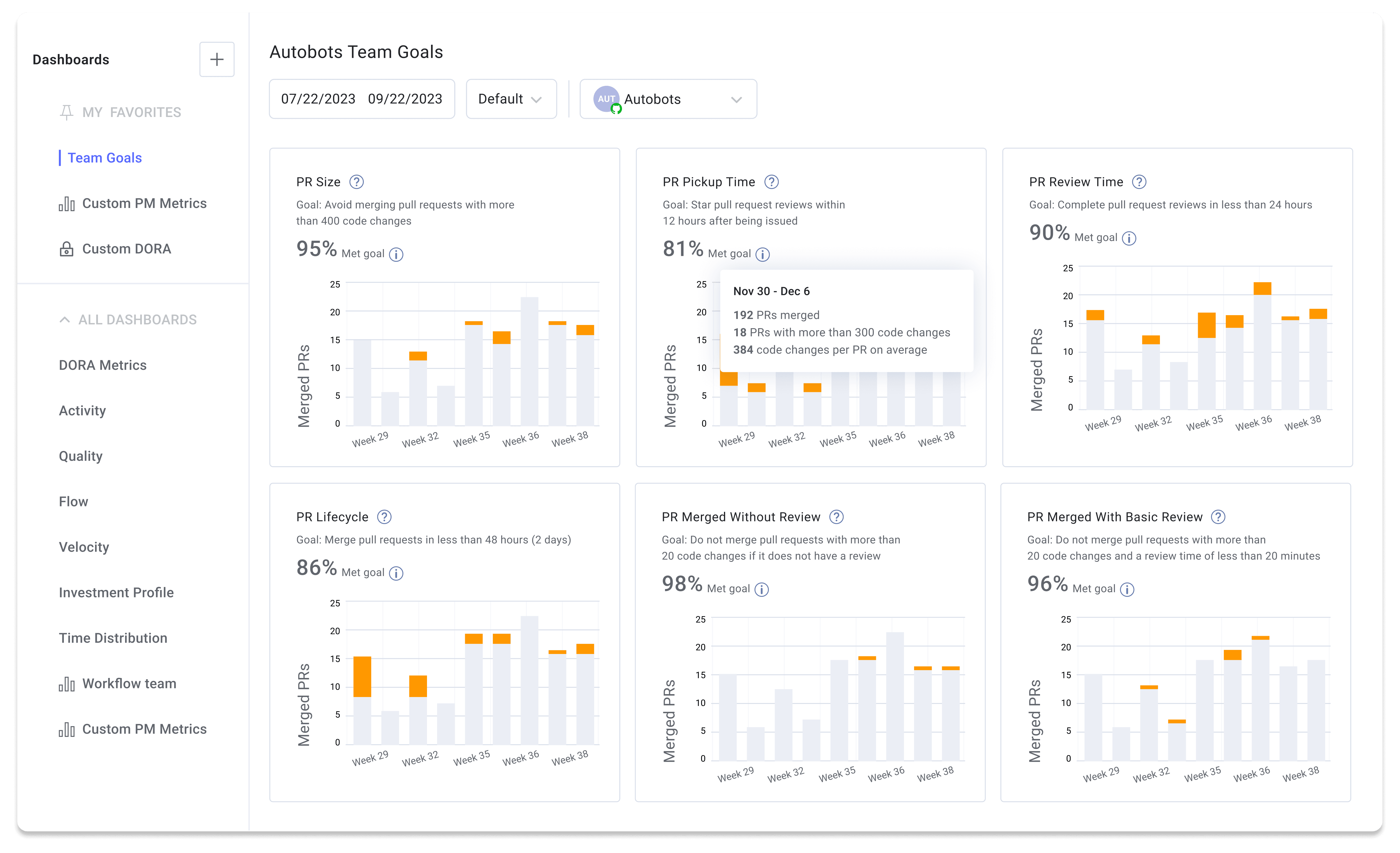
4. Programmable Workflows
The final step in building a predictable software delivery engine is implementing programmable workflows. These workflows automate routine tasks, reduce context switching, and ensure that processes are followed consistently across the team.
- Workflow Automation: Our tools like WorkerB and gitStream help automate the PR review process, enforce coding standards, and improve overall developer experience.

Case Study: How Syngenta Achieved Predictable Project Delivery
Syngenta, a leader in agricultural technology, successfully implemented these methodologies to achieve predictable software delivery. By following LinearB’s successful model, Syngenta was able to reduce its cycle time by 81% and increase planning accuracy by 33% in just six months.

You can read their full case study here
Conclusion
Predictable software delivery is not easy, but it is how you build trust and alignment between engineering, the rest of the business and your customers. By focusing on stability, velocity, and risk management, and by implementing the right tools and processes, engineering leaders can build a delivery engine that consistently meets business goals and drives long-term success.
Want to learn more about predictable software delivery? Download our Engineering Leader's Guide to Predictable Project Delivery here.
